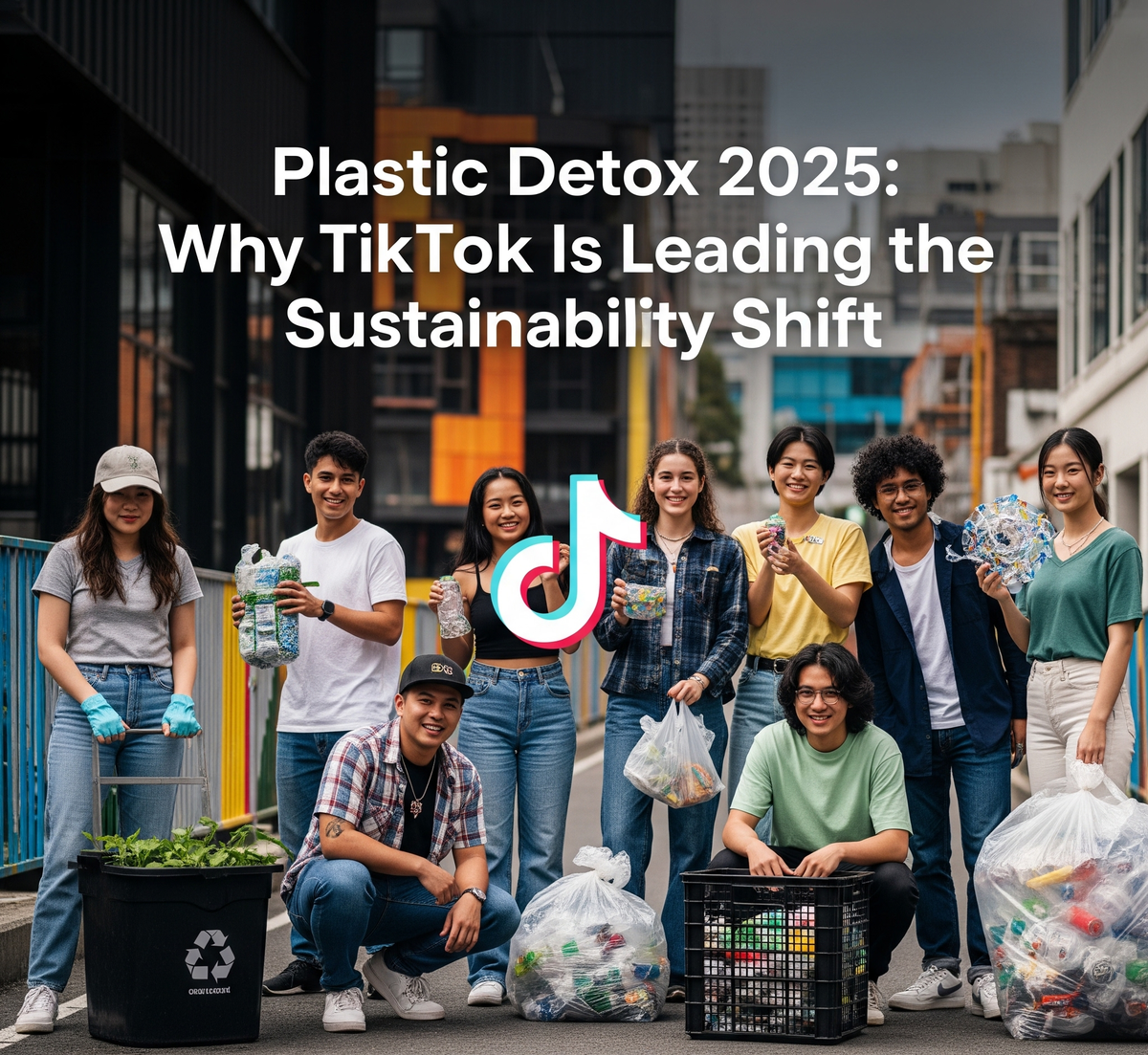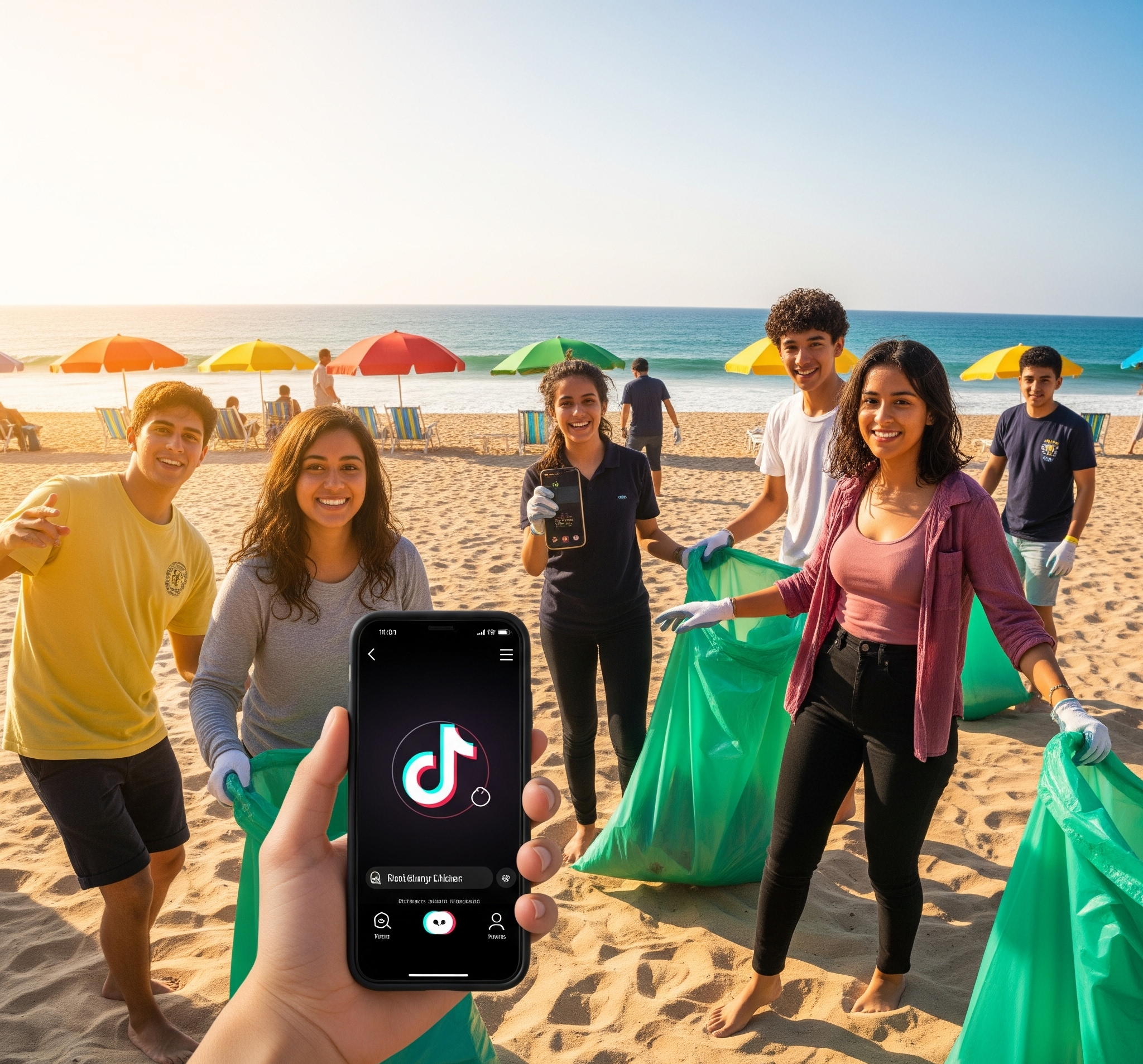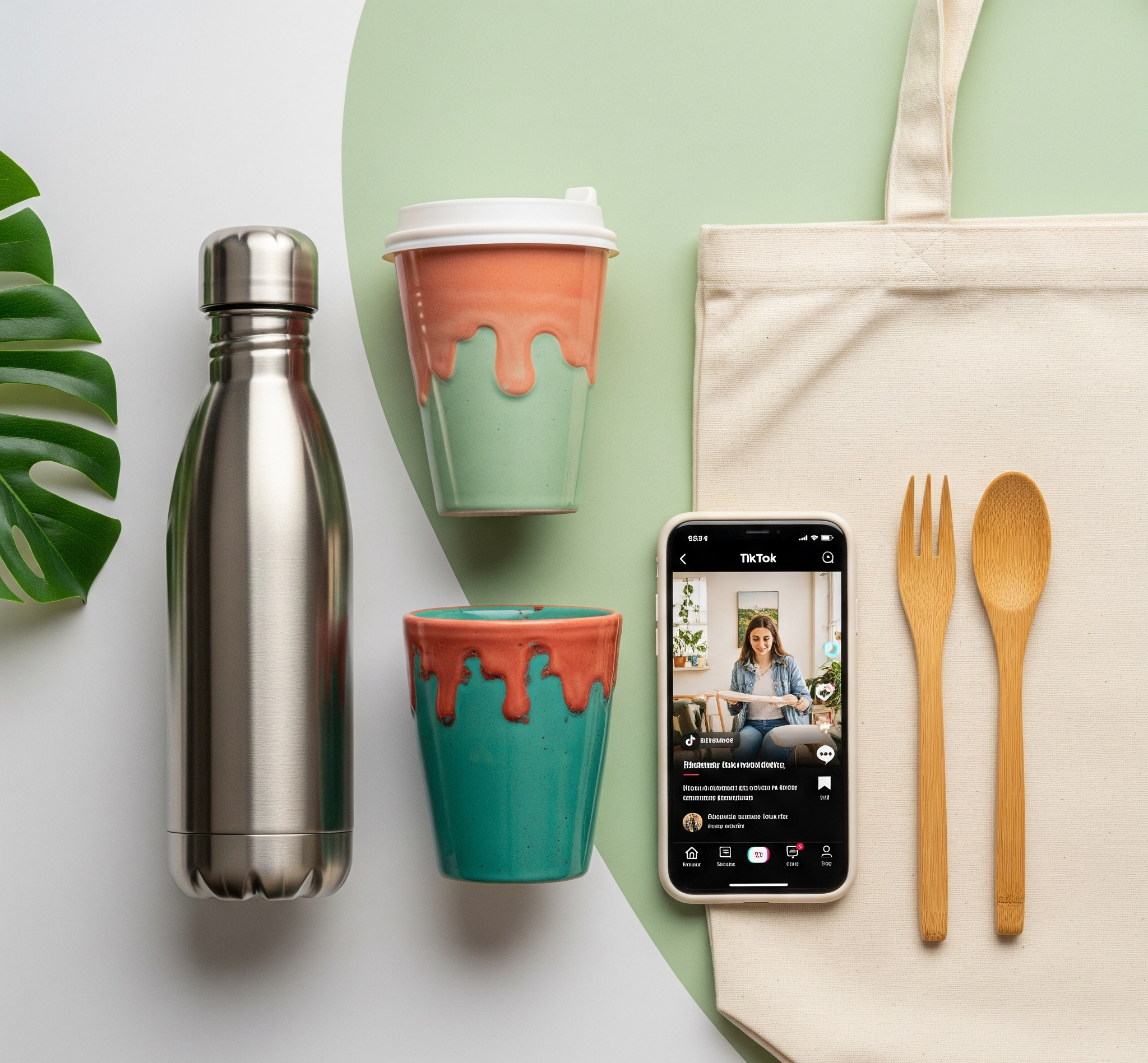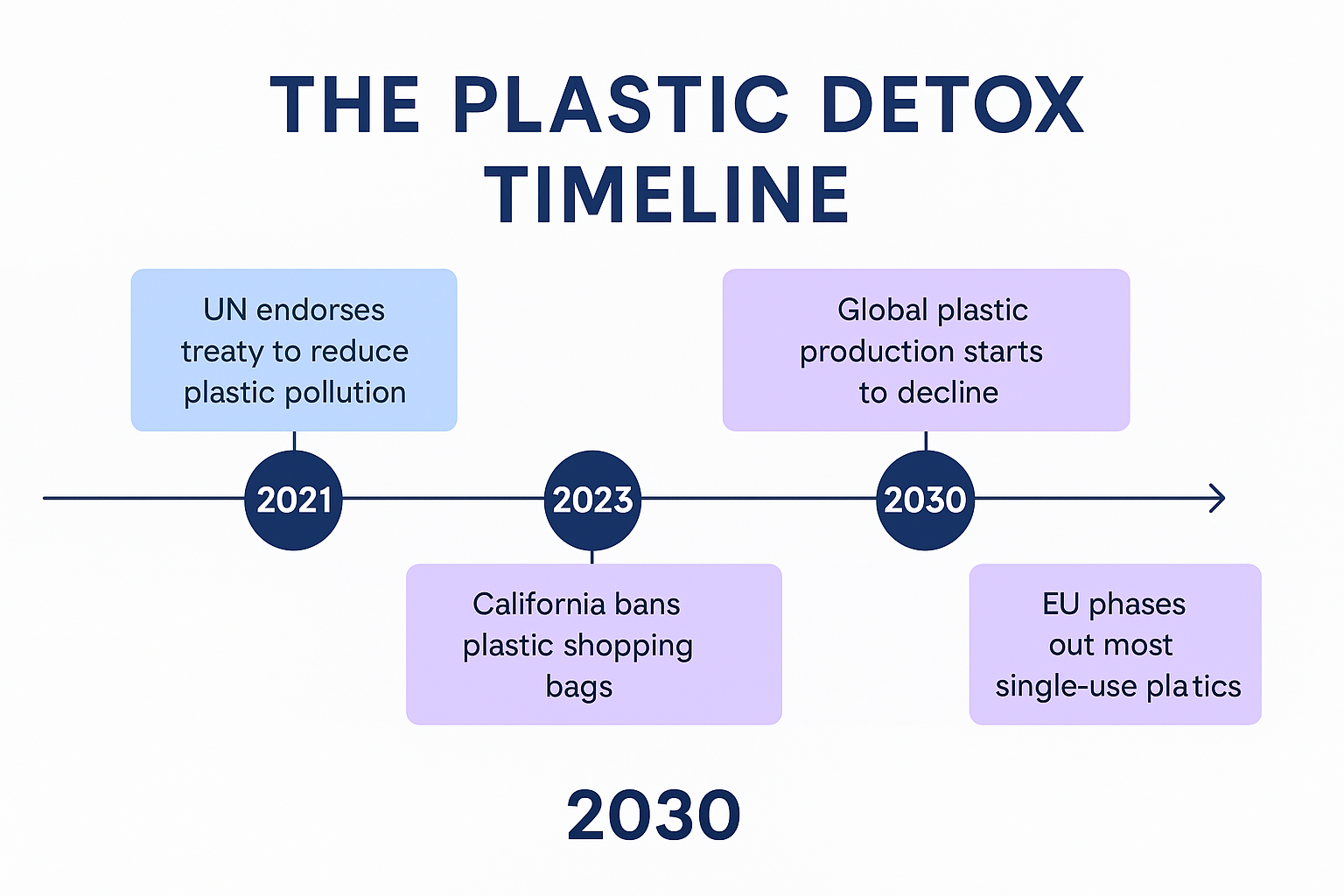Plastic Detox 2025: Why TikTok Is Leading the Sustainability Shift

[LOS ANGELES] – July 1, 2025
It started with a single hashtag: #PlasticDetox. By mid-2025, TikTok had turned the idea into a global movement. With over 3.2 billion views and counting, Gen Z has made going plastic-free not just trendy but transformative. From zero-waste swaps to plastic audits and microplastic exposure experiments, TikTok is redefining how sustainability spreads.
So why now? And what makes TikTok the perfect launchpad for a plastic detox revolution?
The Rise of #PlasticDetox on TikTok
Google Trends shows a 1,000% spike in searches for "plastic detox" and "zero-waste routines" between February and June 2025. Much of this interest traces back to short-form videos: creators showing morning routines without single-use items, DIY shampoo bars, and viral "plastic exposure" challenges using UV-detection kits.
"I started documenting my plastic use every day, and my followers called me out for stuff I didn’t even realize," said TikToker @GreenGurlJess, whose "Plastic-Free Week" series now has over 15 million views. "It’s like a community accountability journal."
This visual accountability is what makes TikTok different. As influencers film swaps and expose greenwashing, viewers are not just entertained but educated.
Visual Culture Meets Eco-Habit
TikTok's highly visual platform is a natural fit for sustainability narratives. Before/after videos of trash jars, fridge transformations, and eco-bathrooms draw millions of likes. One creator, @ZeroWasteDad, shows how he replaced every kitchen plastic with stainless steel or glass in under 30 days.
"We used to say 'reduce, reuse, recycle.' Now it’s record, repost, replace," joked sustainability educator @LenaTalksTrash in one viral clip.
Archived videos from early 2023 on Archive.org show how the aesthetic has evolved: once minimalist and elite, the trend now embraces accessibility and imperfection. Even creators with large families and tight budgets are getting traction for showing budget-friendly swaps and homemade alternatives.
DIY Hacks & Eco Experiments
The "plastic detox" conversation has also become deeply interactive. TikTok challenges such as:
- #7DayPlasticAudit
- #NoBottleMonth
- #CompostCam
- #BYOBChallenge (Bring Your Own Bag)
- #MasonJarOnlyWeek
have encouraged millions to participate and post their own routines.
Some creators use DIY plastic detection kits to analyze their food or water. Others review plastic-free products like bamboo toothbrushes, menstrual cups, or refillable deodorants.
One trending video series by @EcoChefLiv features plastic-free meal preps. In one clip, she shows how to shop for an entire week without using a single plastic wrapper, relying on bulk bins and cloth produce bags. The video reached 10 million views within 72 hours.
Another user, @TeensGoGreen, recently launched an experiment testing popular snack packaging for plastic residue using blacklight filters — encouraging thousands of comments from teens who pledged to reduce snack-related waste.
"Even my dog’s food bag has a plastic lining — it’s everywhere!" commented a follower on one of the top videos.
The sense of shared discovery, accountability, and creativity makes these challenges stick.

Nonprofits & Science Join the Platform
Environmental nonprofits are leveraging the trend to push awareness further. Greenpeace, Break Free From Plastic, and the Plastic Pollution Coalition have partnered with eco-creators to launch TikTok campaigns about microplastics in drinking water, seafood, and even bloodstreams.
"Microplastic ingestion is now universal," stated a 2025 study published by the Environmental Health Journal, widely shared by creators in 60-second explainers.
One such explainer by @PlasticFacts101 used footage from a Cornell University microplastic lab and now sits at 25M views.
In turn, TikTokers are directing audiences to petitions, policy updates, and donation links embedded in their bios.
These creators also frequently cite data pulled from Break Free From Plastic campaigns or Archive.org snapshots comparing brand packaging from 2022 to 2025.
The Brand Reckoning: Greenwashing Gets Called Out
TikTok’s plastic detox movement isn't just celebratory. Many creators are calling out greenwashing by corporations. Beauty brands that market "eco" products in plastic containers are being publicly reviewed, and Amazon sellers of "compostable" bags have been debunked.
@BuyBetter exposed a popular influencer-box subscription as 95% plastic packaging despite a "sustainable living" label. The post received over 500K shares and led to several companies issuing clarifications.
"Sustainability isn't about stickers on shampoo. It's about supply chains and truth," said a viral quote reposted on Threads and Instagram.
According to Archive.org snapshots, several companies have since deleted or edited eco-claims on product pages.

The Corporate Response: Innovation or PR Spin?
Some corporations are taking notice. TikTok’s influence is pushing companies to rethink packaging and production. In April 2025, a leaked memo from a major cosmetics company (archived via Archive.org) revealed plans for a "Plastic-Free Pilot Line" by Q4.
Meanwhile, supermarket chains like Whole Earth Market are testing refill stations, and Gen Z-oriented fashion brands are introducing clothes made with recycled ocean plastic.
Google Trends confirms that searches for "plastic-free toothpaste," "compostable shipping bags," and "bulk soap near me" are at an all-time high.
Yet some creators remain skeptical. "It’s not about plastic-free PR—it’s about transparency, pricing, and permanence," posted @TruthEco, whose takedown of five "green" labels was viewed over 12M times.
What Happens Next?
If TikTok keeps trending toward eco-education, we may be at the tipping point of the next digital-driven climate shift.
Expect a wave of:
- Affordable plastic-free product lines
- Policy engagement from youth coalitions
- App-based waste tracking tools
- Real-time audits on influencers' sustainability claims
In response, the Plastic Policy Tracker (developed by Break Free From Plastic) is being shared on TikTok as a living map of single-use bans across cities. Several creators have started tracking these bans via stitches and duets.
Additionally, TikTok is reportedly in talks with verified sustainability organizations to introduce eco-badges for accounts that meet authenticity and transparency benchmarks. If implemented, this could change how sustainability content is ranked and shared.
Final Thought: Trend or Transformation?
TikTok trends often come and go. But when a viral hashtag becomes an everyday habit—and when users hold brands accountable in real-time—something more than trending is happening.
The plastic detox of 2025 isn't just about quitting straws. It's about rethinking the materials we use, the messages we amplify, and the platforms we trust.
“When education meets virality, movements grow.” — Break Free From Plastic TikTok campaign, May 2025

Call to Action: Will you join the plastic detox? Share your first switch below or tag us in your zero-waste routine.
Discussion Question: Do you think TikTok can become the new watchdog for corporate greenwashing?
Sources: Google Trends, Environmental Health Journal, Archive.org, Break Free From Plastic, Threads/X posts, Cornell University microplastic study, TikTok creator interviews



